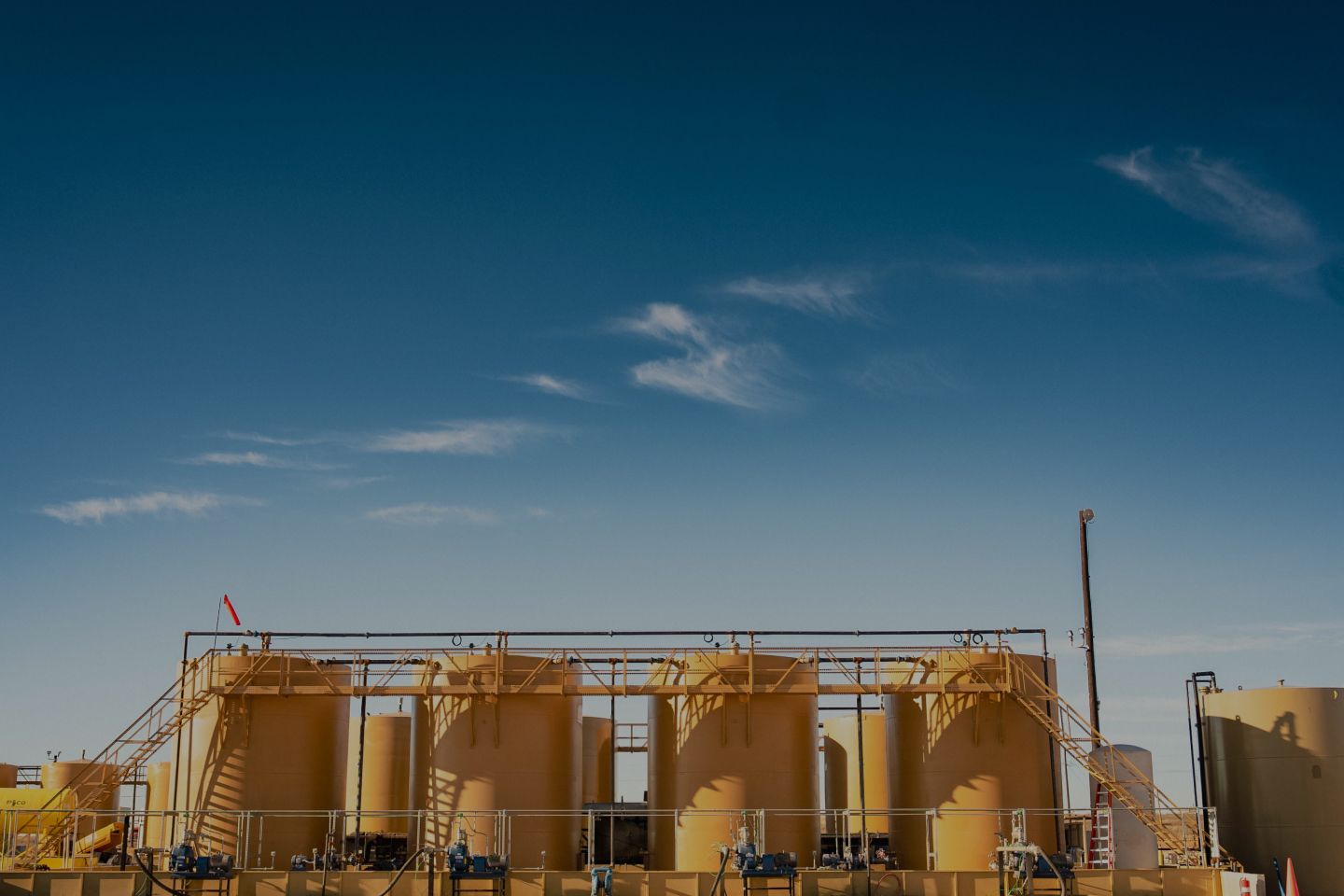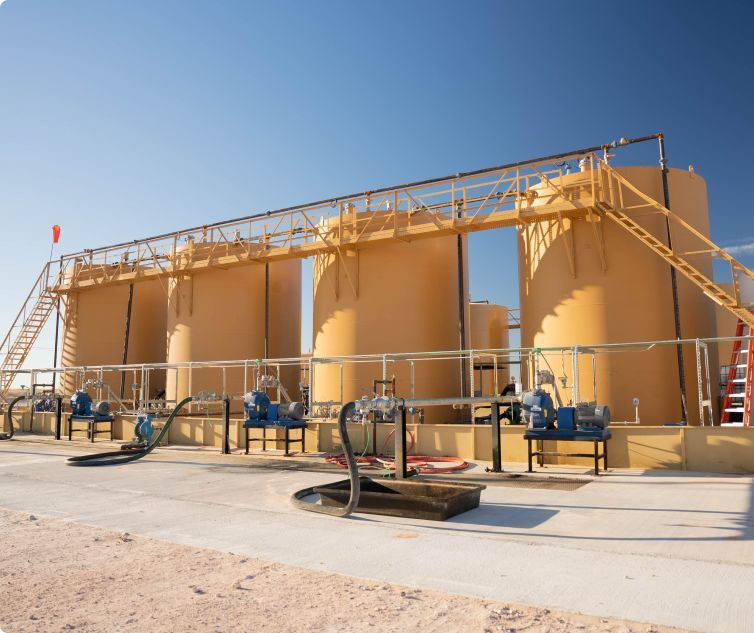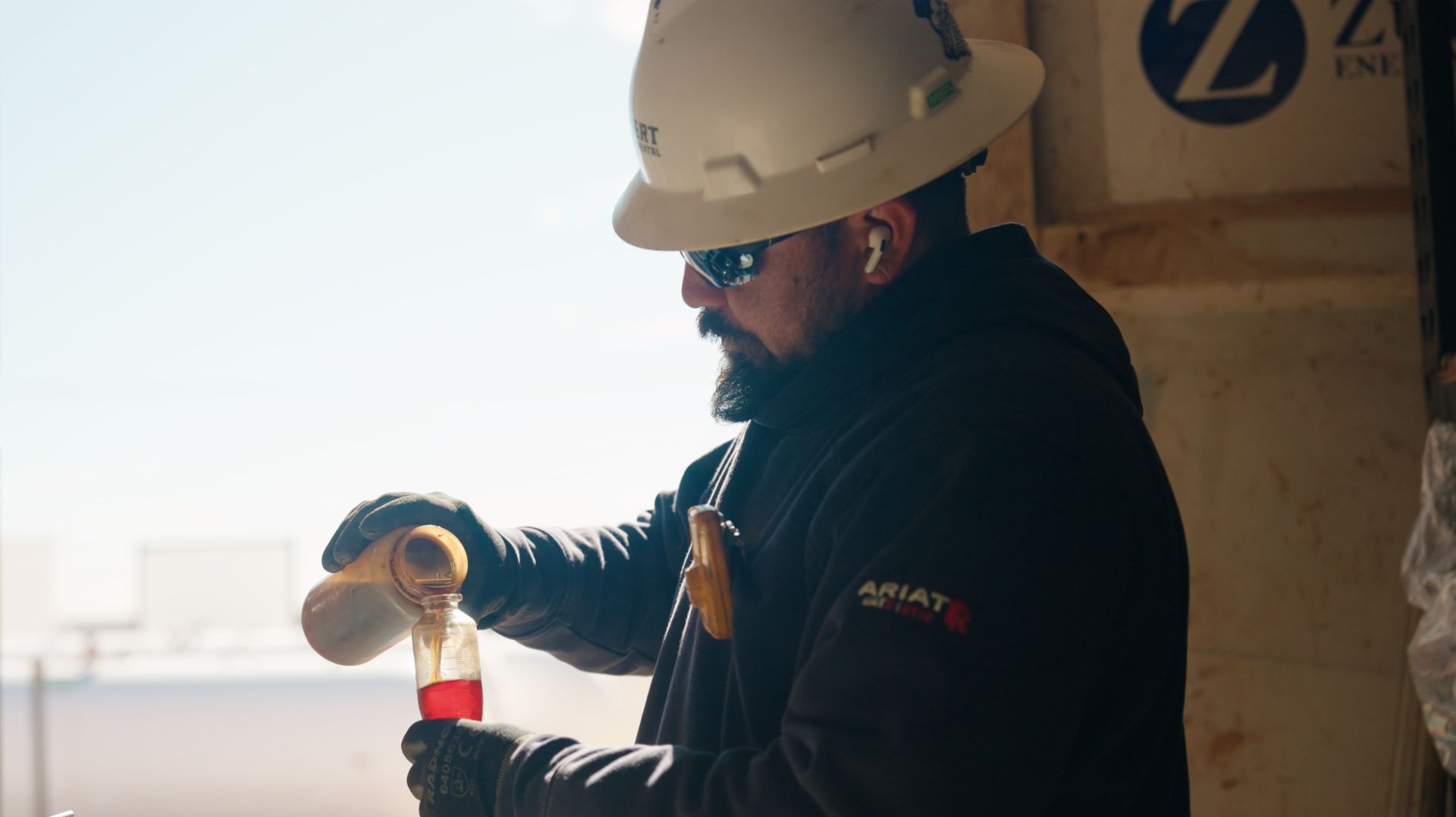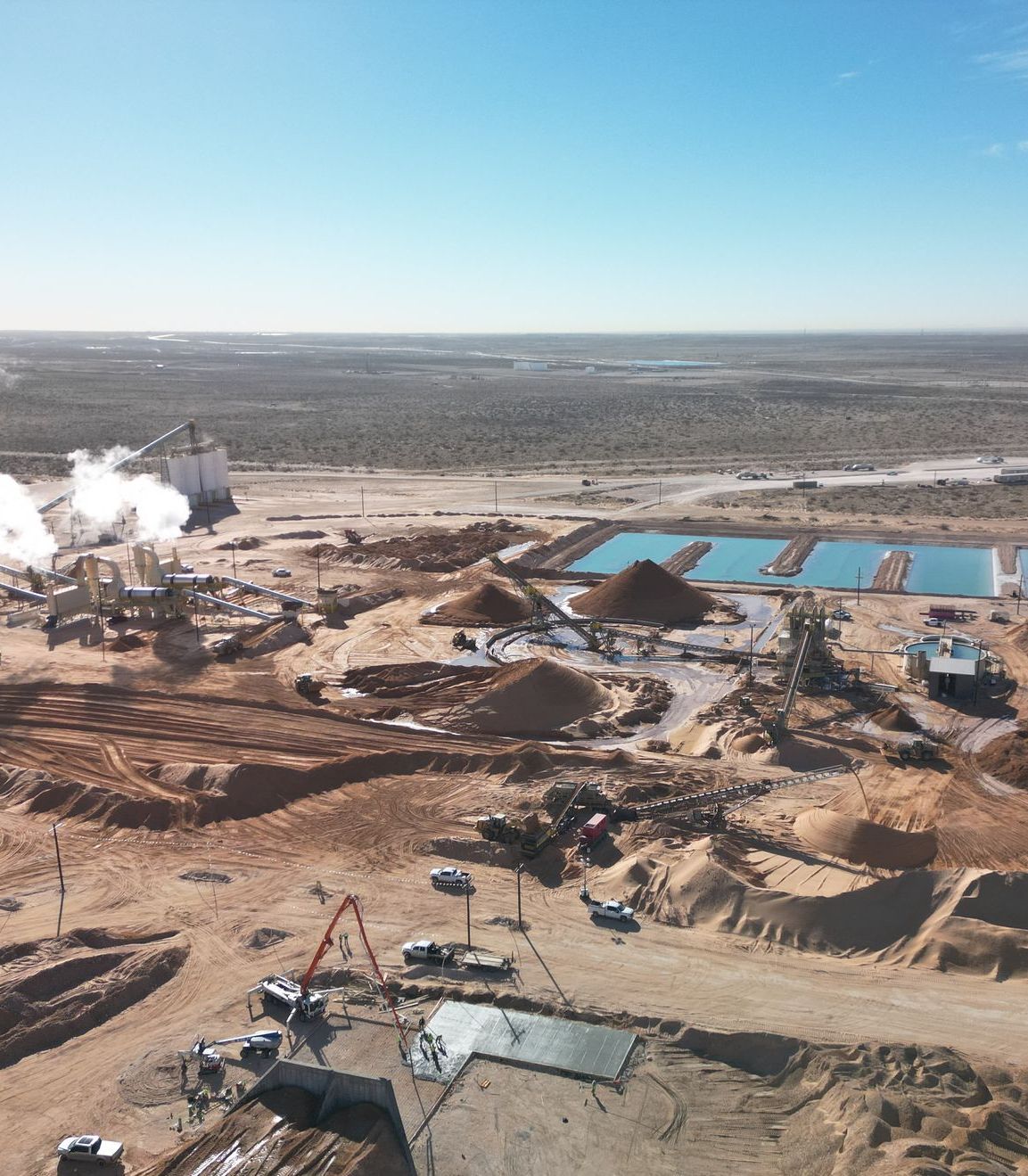Effective Oilfield Waste Management: Best Practices and Strategies
As the oil and gas industry grows, so does the need for responsible waste management to protect the environment and comply with regulations. Effective waste management not only safeguards the environment but also enhances operational efficiency. At Desert Environmental, we recognize the critical importance of effective oilfield waste management.
In this blog, we'll share our insights on best practices and strategies for oilfield waste management. From minimizing waste generation to implementing innovative technologies and ensuring regulatory compliance, we've got you covered. Our goal is to provide practical solutions that benefit both your operations and the environment.
Understanding Oilfield Waste
Effective oilfield waste management begins with understanding the various types of waste generated during oil and gas operations. These wastes have unique characteristics and management needs.
Types of Oilfield Waste
1) Drilling Fluids and Cuttings
- Drilling Fluids are used to cool and lubricate the drill bit and transport cuttings. They become waste containing harmful substances.
- Drill Cuttings: Rock and soil fragments from drilling, often contaminated with fluids and hydrocarbons.
2) Produced Water
- Water is extracted along with oil and gas, containing dissolved salts, hydrocarbons, and chemicals. Proper treatment and disposal are crucial.
3) Completion and Stimulation Fluids
- Used in well completion and hydraulic fracturing, containing various chemicals that require careful handling and disposal.
4) Workover and Well Intervention Fluids
- Used in maintenance to enhance production or repair wells containing contaminants needing proper management.
5) Produced Solids
- Includes sand, silt, and corrosion by-products, often containing hydrocarbons and other contaminants.
Sources of Oilfield Waste
- Drilling and Exploration: Generates drilling fluids and cuttings.
- Production and Extraction: Significant volumes of water and solids are produced.
- Maintenance and Decommissioning: Generates additional waste during well interventions and decommissioning.
Environmental Impact of Improper Waste Management
- Soil Contamination: Improper handling can lead to soil contamination, affecting flora and fauna.
- Water Pollution: Contaminates surface and groundwater, risking drinking water supplies and aquatic ecosystems.
- Air Pollution: VOCs and other pollutants can degrade air quality, impacting human health and the environment.
Understanding these types and sources of oilfield waste and their potential environmental impacts highlights the importance of effective waste management practices. The following sections will explore best practices and innovative strategies to manage this waste responsibly and sustainably.
Best Practices in Oilfield Waste Management
At Desert Environmental, we believe that implementing best practices in oilfield waste management is crucial for minimizing environmental impact, enhancing operational efficiency, and ensuring regulatory compliance. Our approach encompasses waste minimization, proper segregation and storage, and effective treatment and disposal methods to achieve these goals.
Waste Minimization
Source Reduction
- Reduce the amount of waste generated at the source by optimizing drilling and production processes. This can involve using less hazardous materials and improving operational efficiency to reduce waste output.
- Implementing closed-loop systems can help in reusing drilling fluids, thus reducing the volume of waste produced.
Reuse and Recycling
- Identify opportunities to reuse materials within the operation. For example, treated produced water can be reused for hydraulic fracturing or irrigation purposes.
- Recycling waste materials such as metals, plastics, and certain chemicals can significantly reduce the environmental footprint and lower disposal costs.
Process Optimization
- Continuously monitor and optimize processes to identify areas where waste generation can be reduced. This includes adopting new technologies and methodologies that are less waste-intensive.
Proper Segregation and Storage
Waste Segregation
- Segregate different types of waste at the point of generation to prevent cross-contamination. This simplifies the treatment process and ensures that hazardous and non-hazardous wastes are managed appropriately.
- Use designated containers and clearly label them to facilitate proper segregation.
Safe Storage Practices
- Store waste in appropriate containers that are designed to prevent leaks and spills. Ensure that containers are compatible with the type of waste being stored to avoid chemical reactions.
- Implement secondary containment systems, such as bunds and spill pallets, to contain any potential leaks and prevent soil and water contamination.
Regular Inspections and Maintenance
- Regular inspections of storage areas and containers are conducted to identify and address any issues promptly. Maintenance routines should include checking for signs of corrosion, leaks, or structural damage.
- Maintain accurate records of waste storage, including the types and quantities of waste, storage duration, and disposal methods.
Treatment and Disposal Methods
Bioremediation
- Use biological agents such as bacteria and fungi to break down and neutralize hazardous substances in waste. Bioremediation is particularly effective for treating oil-contaminated soils and water.
- This method is environmentally friendly and can be performed on-site, reducing the need for transportation and off-site disposal.
Thermal Treatment
- Heat is used to treat hazardous waste, converting it into less harmful substances. Incineration and thermal desorption are common thermal treatment methods.
- Thermal treatment is effective for reducing the volume of waste and destroying hazardous constituents.
Chemical Treatment
- Use chemical reactions to neutralize or stabilize hazardous waste. This can involve processes such as oxidation, reduction, and precipitation.
- Chemical treatment is suitable for treating various types of waste, including industrial effluents and sludge.
Secure Landfills
- Dispose of treated waste in secure landfills that are designed to contain hazardous materials and prevent leachate from contaminating the environment.
- Ensure that landfills comply with regulatory standards and are equipped with liners, leachate collection systems, and monitoring wells.
Continuous Improvement
Employee Training and Education
- Train employees on best practices for waste management, including proper handling, segregation, storage, and disposal procedures. Education programs should emphasize the importance of compliance and environmental protection.
- Regularly update training programs to reflect changes in regulations, technologies, and company policies.
Monitoring and Reporting
- Implement robust monitoring systems to track waste generation, treatment, and disposal. Use data analytics to identify trends and areas for improvement.
- Maintain accurate and comprehensive records to ensure transparency and facilitate regulatory reporting.
Stakeholder Engagement
- Engage with stakeholders, including regulatory agencies, community members, and environmental groups, to build trust and ensure that waste management practices align with community expectations and regulatory requirements.
- Participate in industry forums and collaborations to stay informed about best practices and emerging trends in waste management.
Adopting these best practices helps companies operate more sustainably, reduce their environmental impact, and maintain compliance with regulatory requirements. In the next section, we will explore some innovative strategies and technologies that are shaping the future of oilfield waste management.
Innovative Strategies and Technologies
Advancements in technology and innovative strategies are transforming the landscape of oilfield waste management. These developments not only enhance efficiency and compliance but also contribute to more sustainable and environmentally friendly operations. Here, we explore some of the cutting-edge technologies and innovative approaches that are revolutionizing the industry.
Advanced Treatment Technologies
Waste-to-Energy Technologies
- Waste-to-energy technologies convert oilfield waste into usable energy, reducing the volume of waste that needs disposal and providing a renewable energy source. Methods such as gasification and pyrolysis are increasingly being used to transform waste materials into electricity or fuel.
- These technologies not only minimize waste but also offer economic benefits by generating additional revenue from the produced energy.
Membrane Filtration Systems
- Membrane filtration systems use advanced filtration techniques to treat produced water and other liquid wastes. These systems can remove contaminants at a molecular level, making the treated water suitable for reuse or safe discharge.
- Ultrafiltration, nanofiltration, and reverse osmosis are common membrane technologies used in oilfield waste management.
Biotechnology Applications
- Biotechnology applications, such as microbial enhanced oil recovery (MEOR) and bioremediation, utilize microorganisms to treat and manage oilfield waste. These biological processes can degrade hydrocarbons and other contaminants naturally and efficiently.
- Advances in genetic engineering and microbial consortia are enhancing the effectiveness of these biotechnological solutions.
Automation and Digitalization
Automated Waste Management Systems
- Automated systems for waste handling and processing increase efficiency and reduce human error. These systems can monitor waste levels, control treatment processes, and manage waste disposal operations with minimal manual intervention.
- Automation improves accuracy, enhances safety, and ensures compliance with regulatory standards.
Digital Monitoring and Analytics
- Digital monitoring tools and data analytics platforms enable real-time tracking of waste generation, treatment, and disposal activities. These tools provide valuable insights into waste management practices, helping companies identify inefficiencies and areas for improvement.
- Predictive analytics can forecast waste volumes and optimize waste management strategies, reducing costs and environmental impact.
Blockchain Technology
- Blockchain technology offers a transparent and secure way to track waste management activities. By recording every step of the waste management process on an immutable ledger, companies can ensure data integrity and transparency.
- Blockchain can streamline compliance reporting and enhance trust among stakeholders by providing verifiable records of waste handling and disposal.
Innovative Waste Management Approaches
Circular Economy Models
- Adopting circular economy principles involves designing processes that minimize waste generation and promote the reuse and recycling of materials. In the oilfield industry, this can include repurposing waste products and using them as raw materials for other applications.
- Circular economy models reduce dependency on virgin resources and create sustainable business practices.
Green Chemistry Solutions
- Green chemistry focuses on designing chemical processes and products that minimize environmental impact and reduce hazardous waste. By using environmentally benign solvents and catalysts, companies can lower the toxicity of their waste streams.
- Green chemistry innovations can lead to safer and more sustainable oilfield operations.
Collaboration and Partnerships
- Collaborating with other industry players, research institutions, and environmental organizations can lead to the development of innovative waste management solutions. Partnerships can facilitate knowledge sharing, technological advancements, and the implementation of best practices.
- Joint ventures and collaborative projects can accelerate the adoption of new technologies and drive industry-wide improvements in waste management.
Innovative strategies and technologies are transforming oilfield waste management every day. By embracing these advancements, companies can enhance sustainability, improve operational efficiency, and ensure compliance with regulatory standards.

Developing an Effective Waste Management Plan with Desert Environmental
Creating a comprehensive waste management plan is essential for effectively managing oilfield waste, ensuring compliance, and minimizing environmental impact. At Desert Environmental, we are committed to helping you develop a well-structured plan that covers all aspects of waste management.
Steps to Create a Comprehensive Waste Management Plan
1) Assessment and Planning
- Waste Audit: Identify the types and quantities of waste generated.
- Set Objectives: Define goals such as reducing waste, enhancing recycling, and ensuring compliance.
- Engage Stakeholders: Involve key stakeholders with diverse perspectives.
2) Develop Waste Handling Procedures
- Waste Segregation: Establish procedures to segregate different types of waste.
- Storage Protocols: Define guidelines for safe waste storage.
- Transportation Policies: Outline procedures for compliant waste transportation.
3) Implement Treatment and Disposal Methods
- Select Technologies: Choose suitable treatment methods like bioremediation or thermal treatment.
- Identify Disposal Options: Determine environmentally sound disposal methods, ensuring regulatory compliance.
4) Training and Education
- Employee Training: Develop programs to educate employees on waste handling and compliance.
- Continuous Education: Promote a culture of learning about industry best practices.
5) Monitoring and Reporting
- Monitoring Systems: Track waste generation, treatment, and disposal activities.
- Regular Reporting: Maintain records and prepare reports for compliance and improvement.
6) Continuous Improvement
- Evaluate and Adjust: Regularly review the plan's effectiveness and gather feedback.
- Incorporate Innovations: Stay updated with new technologies and integrate them into the plan.
- Set New Goals: Continuously set new objectives to further improve waste management.
Importance of Training and Educating Employees
Safety and Compliance
- Ensures safe handling of waste and compliance with regulations, reducing risks and penalties.
Operational Efficiency
- Trained employees handle tasks more efficiently, reducing waste and saving costs.
Cultural Change
- Promotes environmental responsibility and continuous improvement within the organization.
Continuous Monitoring and Improvement
Data-Driven Decisions
- Use monitoring data to make informed decisions and optimize practices.
Regular Audits
- Conduct audits to ensure compliance and identify areas for improvement.
Stakeholder Feedback
- Engage stakeholders to gather feedback and build trust.
Developing an effective waste management plan requires ongoing commitment and adaptation. At Desert Environmental, we are dedicated to partnering with you to achieve sustainable waste management practices that benefit the environment, comply with regulations, and enhance operational efficiency.
Ready to optimize your oilfield waste management? Contact Desert Environmental today to develop and implement a comprehensive waste management plan tailored to your operations. Together, we can create a safer, more sustainable future. Reach out to us now to get started!

© 2024 Desert Environmental | All Rights Reserved. Website by Roundhouse.







